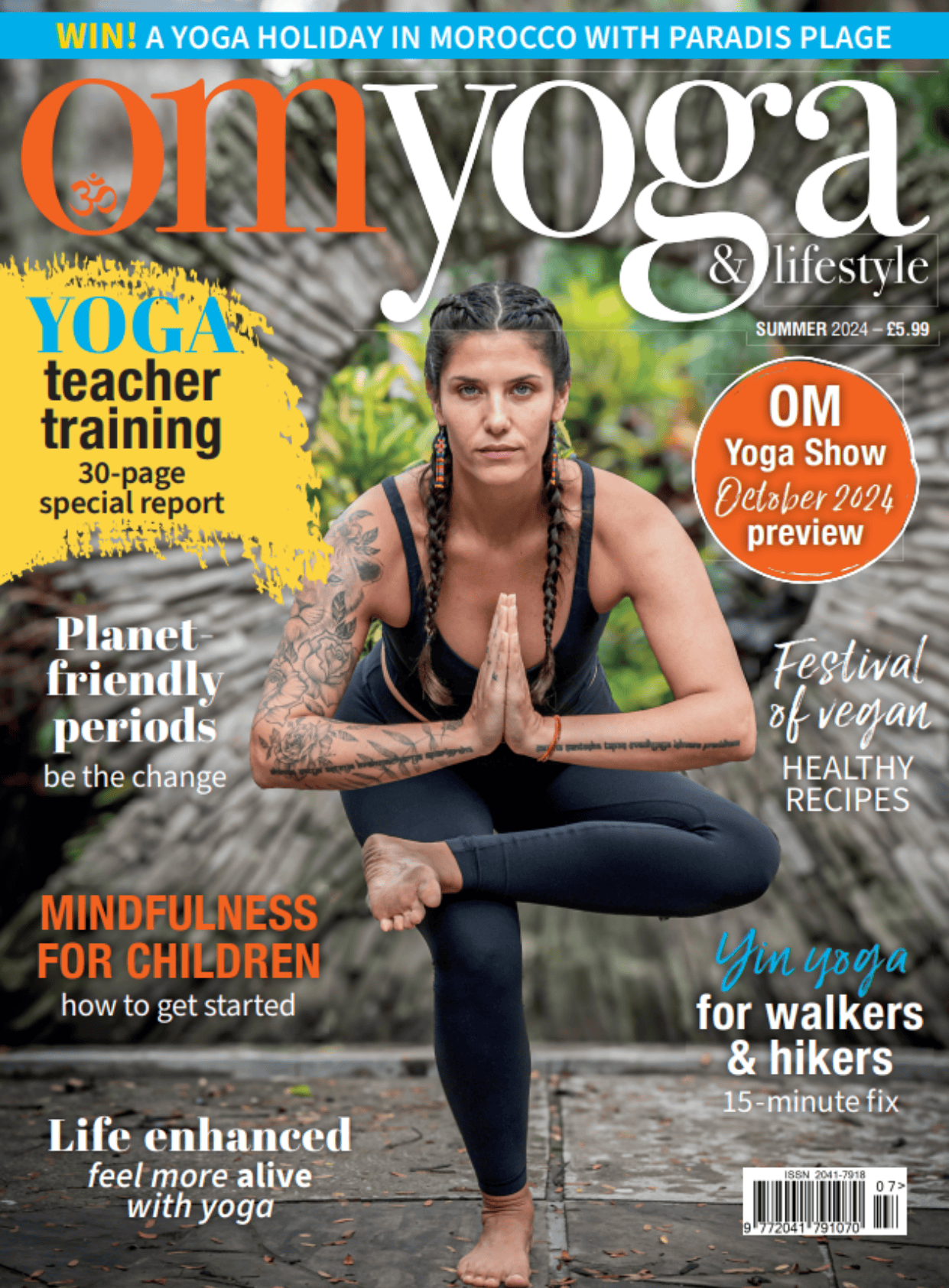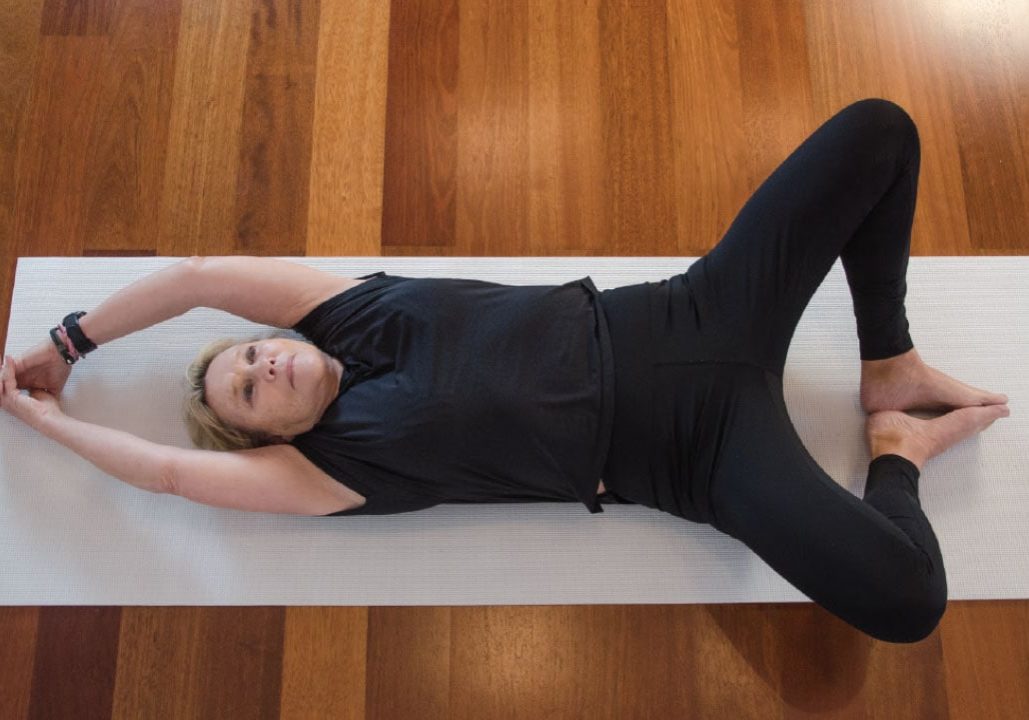
Yin Yoga for Walkers and Hikers
A 15-minute yin yoga fix for tired walkers and hikers.
By Paul Steele
Reading time: 3 minutes
Like to hike but your legs are starting to protest? As we age, our lower bodies tighten up the most, meaning long days on the hills can become painful if we don’t stretch out. Yin yoga focuses on holding gentle stretches for longer periods, targeting the deeper connective tissues in your body. It’s the perfect antidote for a strenuous stroll around the hills for older walkers.
This 15-minute yin yoga fix targets your quads, inner thighs, hamstrings, hip flexors and hip joints to keep you moving along the trail for longer, and without feeling so stiff when you’ve finished.
Remember. If you feel any pain in any pose, back off or come out of the pose directly.
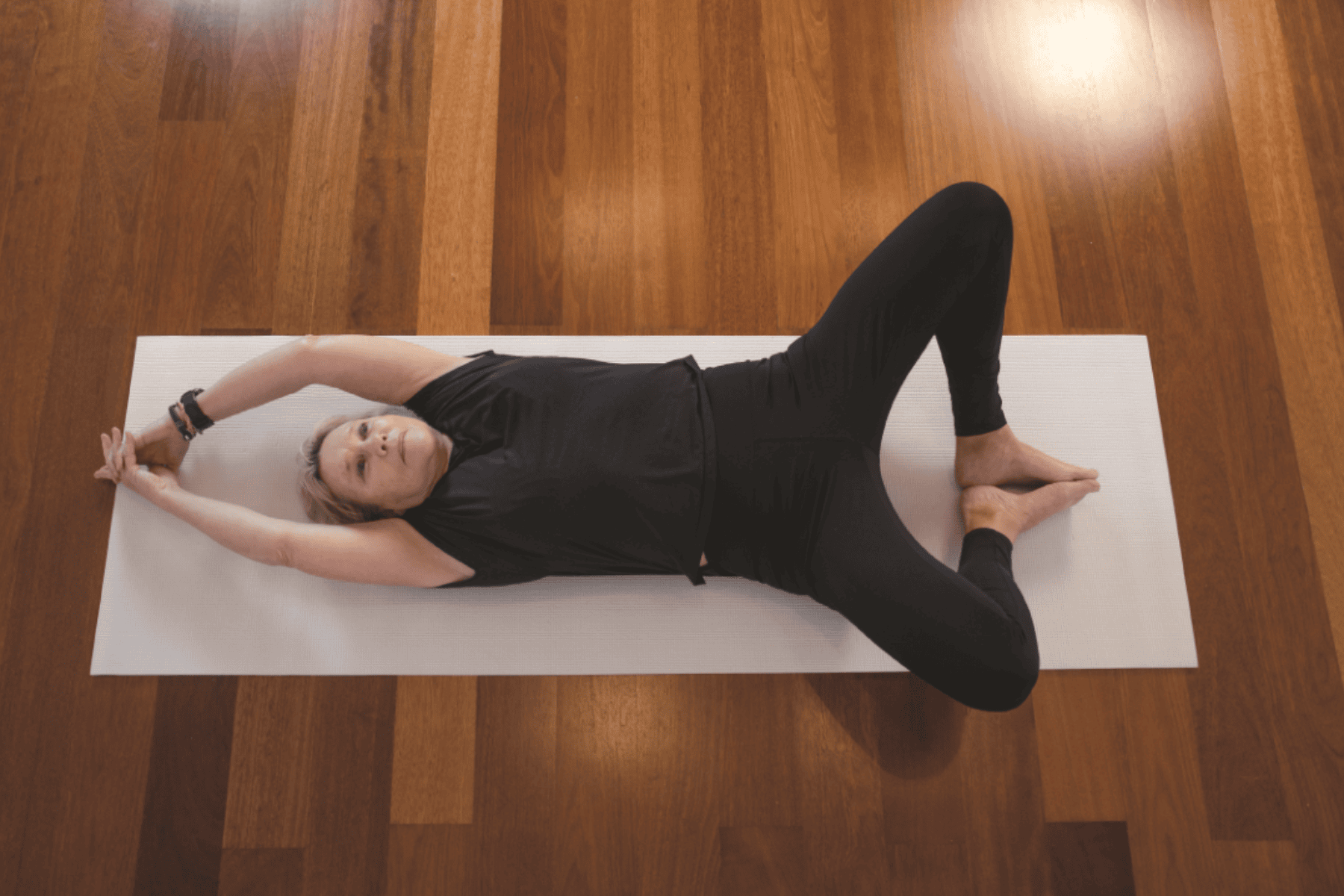
Butterfly (3 minutes)
Butterfly stretches your inner thighs, groins, knees and hamstrings. It also targets the ligaments along the back of the spine, keeping you comfortable on your feet for longer.
Bring the soles of your feet together and let your knees fall either side toward the floor. Don’t try to force your knees, just find your edge. Allow your back to fold forward and try to relax. For an extra stretch, try reclining butterfly (illustrated), then you stimulate the vertebrae in your lower back at the same time.
Counterpose – it’s a great idea to complement each yin yoga pose with a counterpose for just a few breaths. It’s simply a way of bringing the balance back to your body. Try window wipers. Lean back with your feet on the sides of your mat and your feet together and move them from side to side.
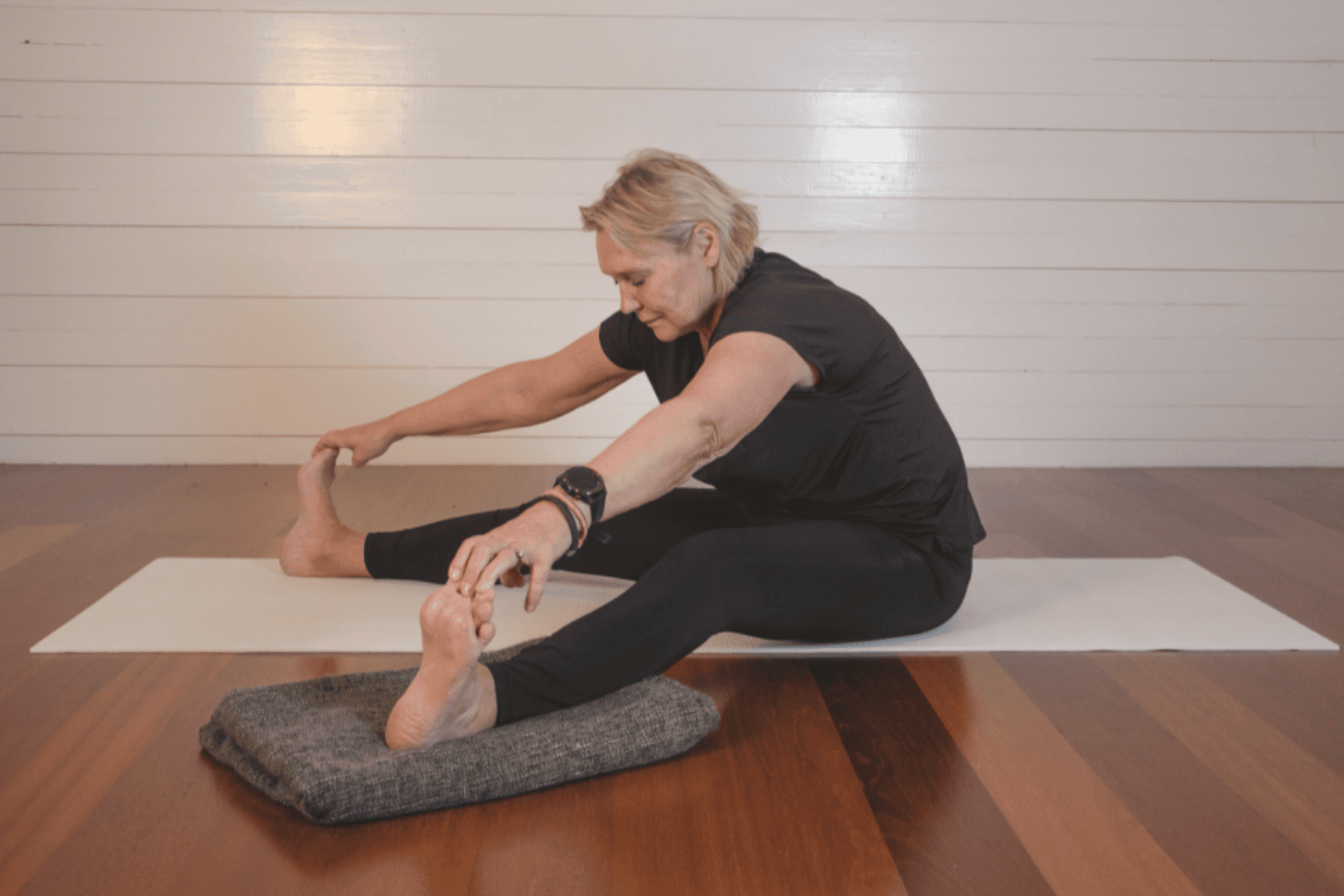
Dragonfly (Straddle) (3 minutes)
This pose helps with hip mobility and stretches your inner thighs, hamstrings, spine and abdominals. It makes walking more comfortable – or life more comfortable after walking. Sit with both legs straight out in front of you. Now spread your legs as far as they can go.
Make sure you tilt your hips forward, allowing your back to round, which avoids too much stress. Let your hamstrings slowly fall into the mat.
Sit higher on a cushion or bolster. Don’t lean forward if you find it too uncomfortable at first.
Counterpose: Lean back onto your elbows and move your feet from side to side to release your hips.
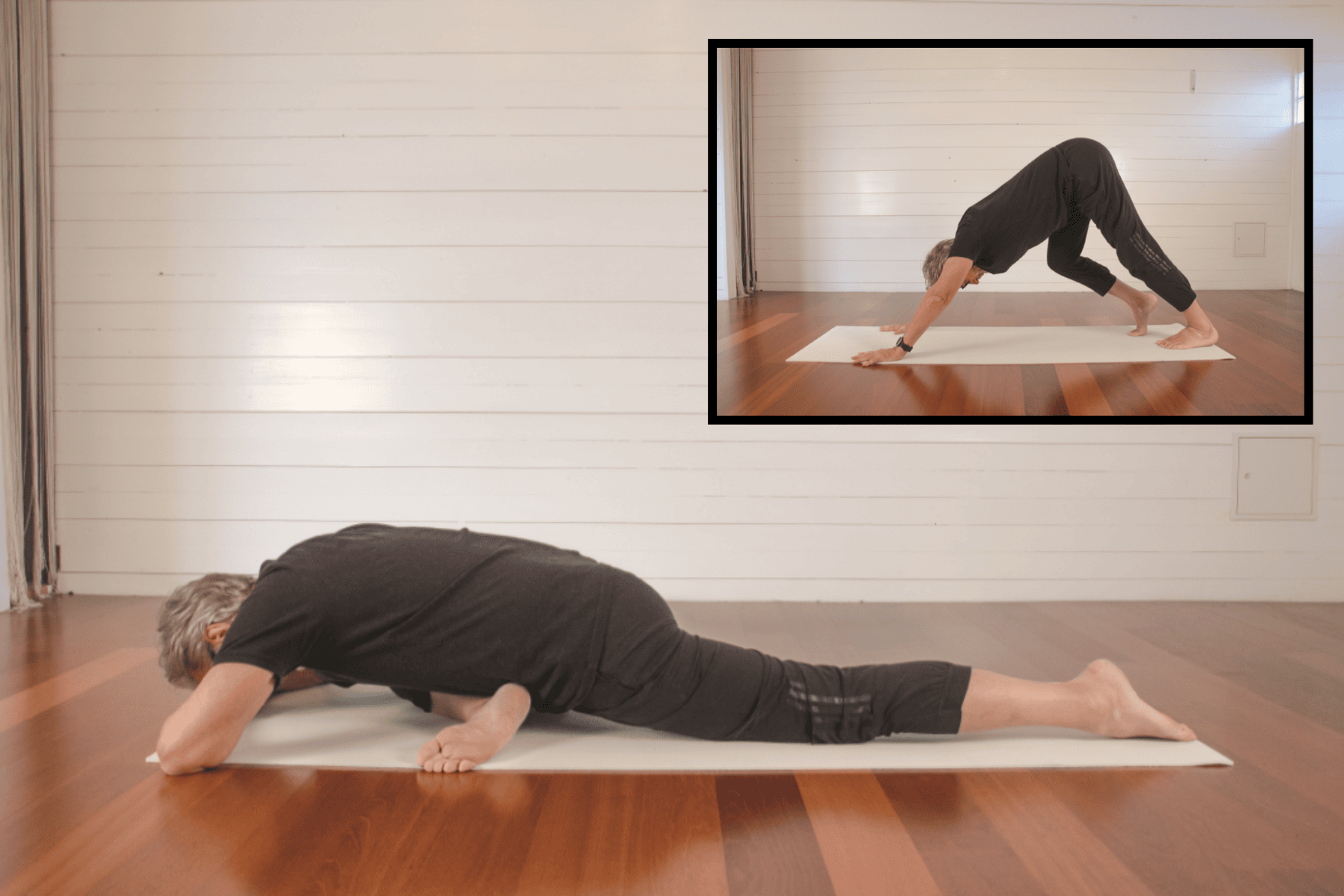
Sleeping Swan (3 minutes each side)
Sleeping Swan is an excellent opener for your hips, legs, groin, back, knees and ankle joints. It stretches the IT (iliotibial) band, which helps prevent knee problems. Less knee problems means a lot more hiking enjoyment! From Tabletop position (on your hands and knees), go into Downward Dog. Bring your right foot forward, keeping your left foot planted. Now bend your knees and sit on the floor, extending your arms in front of you and folding over your right foot. Bring your face down and rest your head in your arms or on a block. You can start and finish each side in Downward Dog, which also makes an excellent counterpose. Keeping your knees slightly bent, try to push each heel down in turn so you ‘walk your dog’.
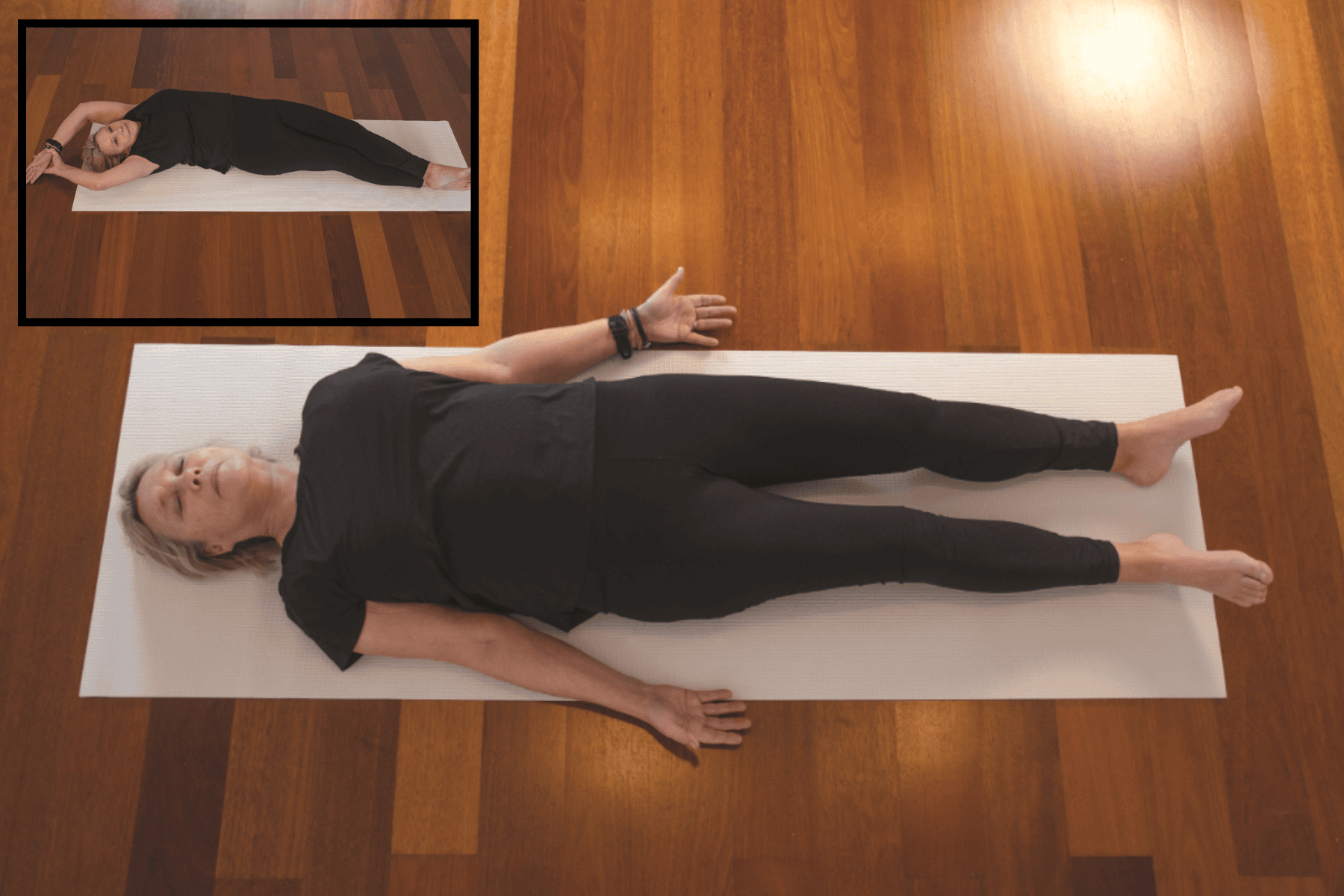
Bananasana (3 minutes each side)
Bananasana stretches your shoulders, arms, chest, core and lower back, stressing the IT (iliotibial) band, taking the pressure off joints, and relieving ‘runner’s knee’. It’s perfect before or after a long hike. Lie down in Savasana (Corpse pose) with your hands by your sides. To stretch your left side, bring your bottom to the left-hand side of your mat. Bring your hands over your head and stretch out fully. Keep your feet together and move them to the right. If you prefer, cross your left foot over your right foot. Grab your left wrist with your right hand then gently pull. Try to stay relaxed and don’t put too much pressure on your lower back. Counterpose: Hug/ circle your knees
You’re done. If you’ve got a few minutes over, lie in Savasana (Corpse pose) as long as you like while you check out how your body feels now. You should feel a lot less leggy. Now go wander in the wilderness.
Paul Steele is a copywriter, yin yoga teacher and author of the book Yin Yoga 50+ who lives in Malmö, Sweden. Find out more at: yinyoga50.com


